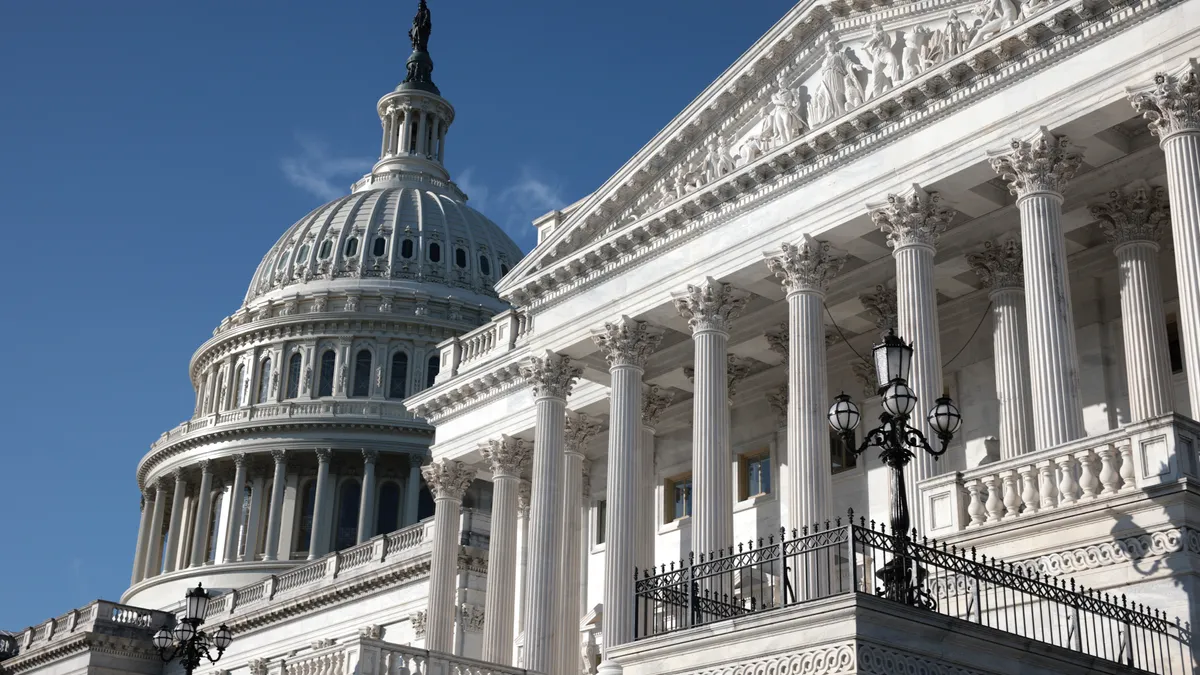Federal lawmakers are once again pushing to bolster workplace anti-discrimination protections for older workers, meaning potentially increased legal liabilities for employers — but companies can still defend against claims with proper documentation, an attorney told HR Dive.
On Dec. 4, Republicans and Democrats in the U.S. House of Representatives introduced the Protecting Older Workers Against Discrimination Act, also known by the acronym POWADA. The bill’s key provision is that it would amend federal law to clarify that a party may demonstrate that an unlawful employment practice occurred by showing that age, or any other protected characteristic or protected activity, motivated the unlawful practice.
A bill summary published by Rep. Bobby Scott, D-Va., calls this provision the “mixed-motive” test. POWADA has been introduced in Congress multiple times since its original 2009 proposal without success. A 2021 version of the bill passed the House that year but did not clear the Senate.
SCOTUS ruling altered the age bias landscape
Advocates for the POWADA point to a 2009 U.S. Supreme Court case as a turning point for the laws that govern age discrimination.
In Gross v. FBL Financial Services, Inc., the court held in a 5-4 decision that a plaintiff bringing a disparate treatment claim under the Age Discrimination in Employment Act must prove, by the preponderance of the evidence, that age was the “but-for” cause of an adverse employment action.
Additionally, the court said employers need not show that they would have taken such an action regardless of age in the event that plaintiffs produce evidence that age was a motivating factor.
“More than a decade ago, the Supreme Court undermined protections for older workers by setting an unreasonable burden of proof for age discrimination claims,” Scott said in a press release. POWADA, he added, “would finally restore the legal rights of older workers by ensuring that the burdens of proof in age discrimination claims are treated in the same manner as other discrimination claims.”
The latest version of the bill has backing from interest groups including AARP, which cited in a Dec. 6 letter the results of a 2022 survey that showed 64% of workers 40 years of age and older had reported seeing or experiencing age discrimination at work.
Implications for employers
From a statistical point of view, age bias has affected the HR profession for years. A 2021 report by the nonprofit Generation found that hiring managers tended to view workers ages 45 and above as weaker job candidates. Similarly, a 2022 Resume Builder survey found that 4 in 10 hiring managers admitted to age bias.
Against that backdrop, and given the bipartisan support behind POWADA, the bill has a good chance of becoming law, said Michael Fallings, managing partner at Tully Rinckey. But if it does, employers would still have potential defenses to age discrimination claims.
“It’s not necessarily opening the doors for employees to get remedies for age discrimination,” Fallings said. “I think it’s a leveling of the playing field, so to speak.”
Documentation and the creation of a timeline of events that support specific employment actions, such as discipline or termination, are examples of the tactics employers may rely upon, he continued. This can include documentation of events like verbal counselings, performance issues or other kinds of policy violations.
For performance-based decisions specifically, employers must show that they have provided notice to the employee in multiple forms over a sufficient period of time, Fallings said, as well as a performance improvement plan where applicable.














